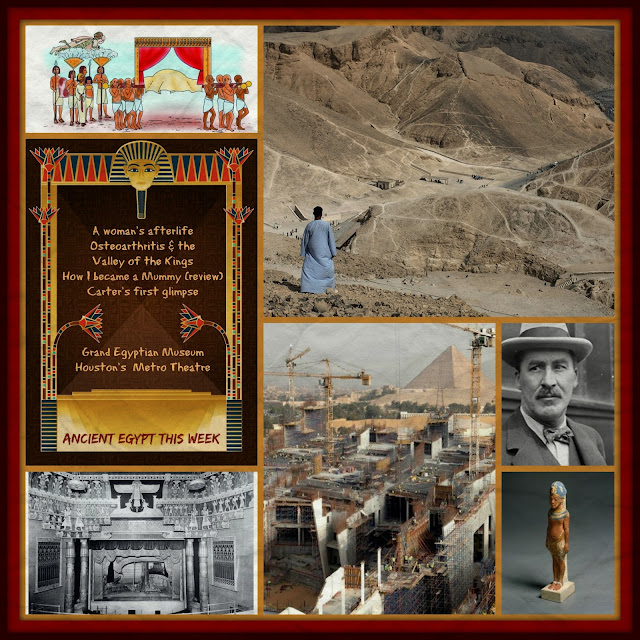A Woman's Afterlife: Gender Transformation in Ancient Egypt Opens At Brooklyn Museum, 12/15
The ancient Egyptians believed that to make rebirth possible for a deceased woman, she briefly had to turn into a man. In A Woman's Afterlife: Gender Transformation in Ancient Egypt, the Brooklyn Museum presents new research--- inspired in part by feminist scholarship--- to tell this remarkable story of gender transformation in the ancient world. Opening on December 15, the exhibition showcases 25 works from the Museum's celebrated Egyptian collection to explore the differences between male and female access to the afterlife. The exhibition is part of A Year of Yes: Reimagining Feminism at the Brooklyn Museum, a yearlong project celebrating a decade of feminist thinking at the Brooklyn Museum.
Steep commute gave ancient Egyptian workers osteoarthritis
Andrew McConnell/Alamy Stock Photo
Commuting to work can be a real pain, and it was no different in ancient Egypt. About 3500 years ago, the artisans who dug out and decorated the rock-cut royal tombs in the Valley of the Kings—the burial ground of Egypt's New Kingdom pharaohs—had to walk about 2 kilometers from their homes, over the Theban hills, to the royal necropolis for work. It was a steep climb, repeated week after week for years, leaving them suffering from osteoarthritis in the knees and ankles, according to a new study
New Children’s Book Shows Human Side Of Mummies
by Nigel Fletcher-Jones
all images from How I Became a Mummy (AUC Press)
. . . as he watches the palace servants struggle getting his well-rounded body onto a stretcher, that, “Maybe a little less honey cake and fine wine might have been a good thing.”
from How I Became a MummyIn last month’s column, I described the ways in which museum curators and archaeologists are bringing together a number of scientific techniques in order to delve deeper, and more meaningfully, into the real lives of individuals who were mummified in ancient Egypt.
Howard Carter’s First Glimpse Into Tutankhamun’s Tomb
On 4th November, Carter and his excavation team found a set of steps that they hoped would lead to the pharaoh’s final resting place. After some initial investigations, Carter wired his benefactor and patron: Lord Carnarvon, to come to the site, sensing that he had found something important. On 22nd November, with Carnarvon, Carnarvon’s family and others in attendance, Carter chiseled a small hole into the top left hand corner of the tomb’s sealed entrance.
Cairo’s Grand Egyptian Museum Takes Shape
With a grand opening now in May 2018, the final form of the main building will leave the viewer with a “tremendous sense of awe due to its immense size,” said Waleed Abdel Fattah, Hill’s senior vice president of North Africa.
Picture of the week








No comments:
Post a Comment
Note: Only a member of this blog may post a comment.